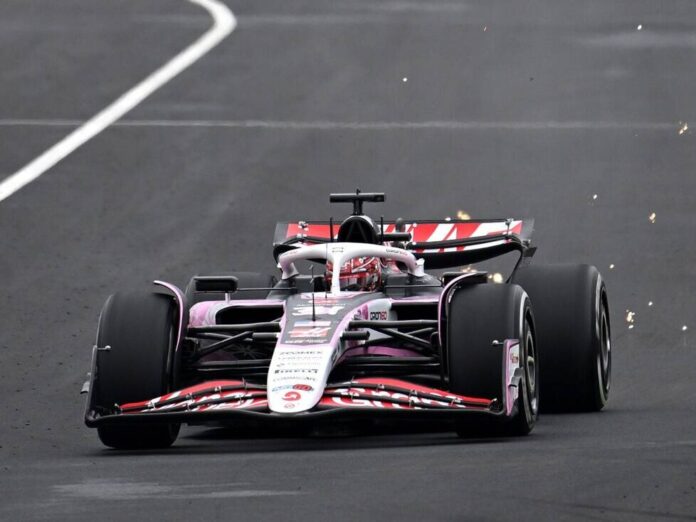Haas solved its high-speed problem with a quick update – without wind tunnel testing, but with the right instinct, as team boss Komatsu confirms
The 2025 season opener in Australia was a shock for Haas: Both cars were at the bottom of the timesheets in free practice – team boss Ayao Komatsu even spoke of a moment that made him “sick.” But analysis led to a quick solution, which was used for the first time in Suzuka – without any wind tunnel testing.
The problem: the VF-25 was unstable in fast corners. This was exacerbated by the bumps in turns 9 and 10 at Albert Park. This flaw had not been noticed during test preparations. Komatsu and his team worked backwards through the development stages – from last year’s VF-24 to the final construction phases of the current car – to find the trigger.
The search for the fault was made more difficult by restrictions on wind tunnel hours. “You can’t let the car touch the floor in the wind tunnel – that would damage the conveyor belt,” explains Komatsu. “Certain conditions simply cannot be replicated in the wind tunnel.”
Haas had developed a measurement method to assess such effects and considered it sufficient. “We didn’t have this problem last year. Many other teams that were further ahead in the underbody design already had the problem in 2024. Until you experience it yourself, you don’t even know it exists.”
Shot in the dark
The realization in Melbourne: The methodology and the limits set were too aggressive. “Once we knew the real reason, we had to look at how we could modify the car to reduce the effect.” This is how the Suzuka update came about – an “elaborate shot in the dark,” as Komatsu emphasizes, with no time for wind tunnel validation.
The Shanghai International Circuit in China concealed the problem with just a few fast corners. In Suzuka, on the other hand, with its many high-speed passages, Haas was under pressure to act. The update had the desired effect: Oliver Bearman finished 10th and the VF-25 gained stability in critical cornering areas.
Subsequent wind tunnel tests confirmed the theory. “We implemented two things for Suzuka and later saw in the wind tunnel that it actually improved. The assumption was correct, the shot in the dark was a hit,” said Komatsu.
With this confidence, Haas was able to develop the next update for Imola. “Maybe it didn’t increase the absolute pace massively, but it made the car more robust in such conditions. Then you can start to add real performance – as we saw in Silverstone.”





